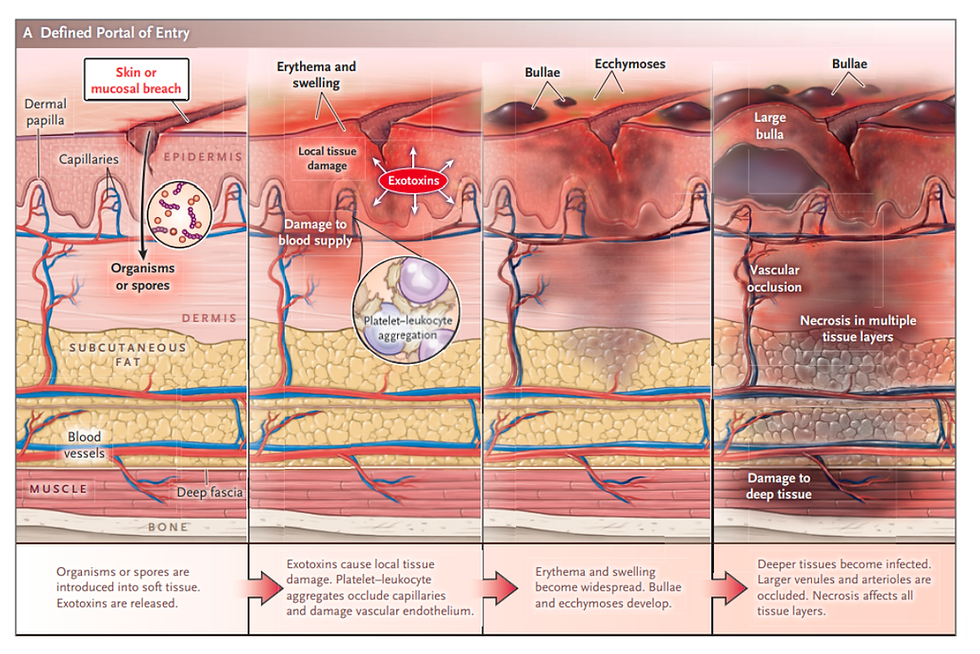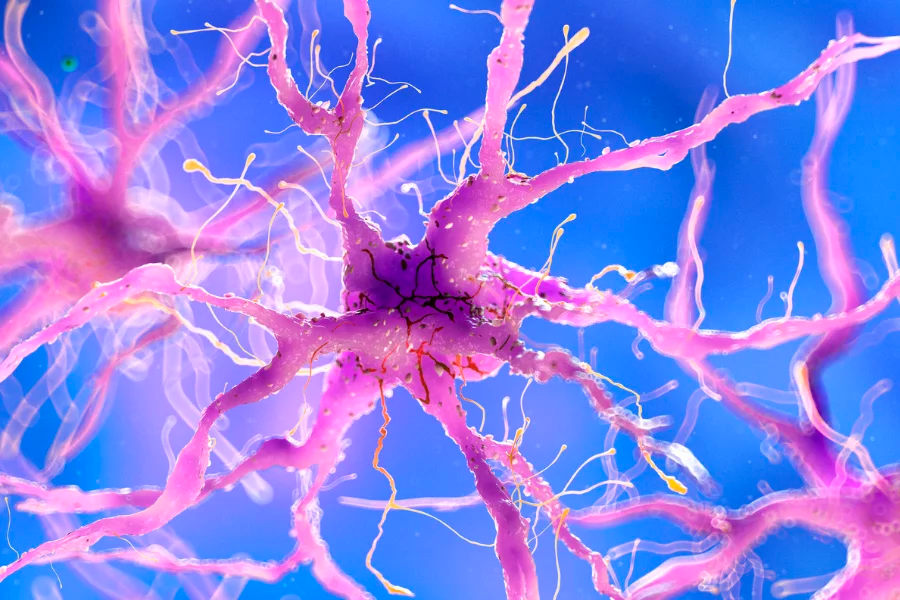Frozen Danger: Understanding Frostbite
- Bridget Ibitoye
- Jan 10, 2024
- 4 min read
While winter brings many joys, it also presents risks to our health. One such danger is frostbite, a condition caused by exposure to extreme cold temperatures.
Frostbite occurs when prolonged exposure to cold temperatures leads to freezing of the skin and underlying tissues. It typically affects areas of the body that are exposed, such as the fingers, toes, ears, nose, and cheeks. When the body is exposed to extreme cold, blood vessels in these exposed areas constrict, reducing blood flow and oxygen supply. This constriction is the body's protective mechanism to preserve core temperature. However, prolonged constriction can lead to tissue damage.
The Stages of Frostbite
Frostbite progresses through several stages, each with distinct symptoms and effects on the body.
Frostnip
Frostnip is the initial stage of frostbite, characterized by temporary damage to the skin and underlying tissues due to exposure to extreme cold temperatures. During frostnip, the affected area may appear pale and feel numb or tingly. The skin may also feel cold to the touch. However, despite these discomforting symptoms, frostnip does not cause permanent tissue damage. With prompt rewarming and appropriate care, the affected area can fully recover without any lasting consequences. It is crucial to take frostnip seriously and take measures to avoid further exposure to cold temperatures to prevent progression to more severe stages of frostbite.
Superficial Frostbite
Superficial frostbite is a more advanced stage of frostbite, where the freezing extends beyond the outer layers of the skin and affects the underlying tissues. At this stage, the affected area turns white or bluish-gray and feels hard or waxy to the touch. Blisters may also develop within hours or days, indicating further tissue damage. Seeking immediate medical attention is crucial during this stage to prevent complications. With proper medical care, superficial frostbite can be managed effectively, and the damaged tissues can heal. However, without prompt treatment, the risk of infection and long-term damage increases significantly.
Deep Frostbite
Deep frostbite is the most severe stage of frostbite, where the freezing extends deep into the skin and affects the muscles, tendons, and even bones. The affected area loses all sensation, and the skin appears black or dark purple. At this stage, there is a significant risk of permanent tissue damage, nerve injury, infection, and even the need for amputation. Immediate medical attention is essential to minimize further harm. Deep frostbite requires intensive medical interventions, such as rewarming techniques, wound care, and possible surgical interventions, to prevent complications and promote healing. Long-term management and rehabilitation may be necessary to address the lasting effects of tissue damage.
Some of the signs and symptoms of frostbite include..
Numbness or loss of sensation in the affected area.
Pale or waxy appearance of the skin.
Skin that feels cold to the touch.
Tingling or stinging sensations.
Skin discoloration (white, bluish-gray, or yellowish).
Hard or waxy texture of the skin.
Swelling or blistering of the affected area (in more severe cases).
Pain or aching in the frostbitten area.
Reduced range of motion in joints near the affected area.
Burning or prickling sensations during rewarming.
If you experience any of these symptoms, it is crucial to seek immediate medical attention to prevent further damage and complications.
Effects on the Body
Frostbite can have long-lasting effects on the body, even after rewarming and treatment. Some common consequences include:
Tissue Necrosis
Frostbite can lead to tissue necrosis, which refers to the death of cells and tissues due to the freezing process and subsequent cell destruction. In severe cases, the lack of blood flow and oxygen to the affected area can cause irreversible damage. If the tissue necrosis becomes extensive, it may result in the need for amputation or reconstructive surgery to remove the dead tissue and restore functionality. Tissue necrosis can significantly impact a person's physical well-being and quality of life, requiring ongoing medical management and rehabilitation.
Nerve Damage
Frozen tissues can damage the nerves in the affected area, leading to various neurological symptoms. This can result in reduced sensation, tingling, burning, or even complete loss of feeling in the affected region. Nerve damage associated with frostbite can be long-lasting and may persist even after the tissue has healed. It can affect motor function and impair daily activities, making physical therapy and rehabilitation important components of the recovery process.
Increased Sensitivity
Once frostbitten, the affected area may remain highly sensitive to cold temperatures. Even after recovery, exposure to cold conditions can cause discomfort, pain, and potentially trigger recurrent symptoms of frostbite. People who have experienced frostbite should take extra precautions to protect the affected area from future cold exposure, such as wearing appropriate clothing and using insulation methods to maintain warmth and prevent re-injury.
Infection
Frostbitten skin is more vulnerable to infections due to compromised blood circulation and damaged tissue. The freezing process can cause micro-injuries, which may serve as entry points for bacteria and other pathogens. Infection in frostbitten tissues can lead to severe complications if left untreated. Medical attention is essential to prevent or manage infections promptly to minimize the risk of further tissue damage and systemic spread.
Frostbite can result in long-term complications that may persist even after the initial recovery. Some common long-term effects include chronic pain, joint stiffness, and limited mobility. The damaged tissues may not fully regain their previous functionality, requiring ongoing medical care, physical therapy, and rehabilitation interventions.
To prevent frostbite, remember these key points:
Dress in layers, wear moisture-wicking and insulated fabrics, and cover exposed skin with hats, scarves, gloves, and face masks.
Stay dry by using waterproof or resistant clothing and change into dry clothes if they become wet.
Use hand and foot warmers in extremely cold conditions.
Limit exposure to extreme cold and take regular breaks in warm sheltered areas.
Protect against wind chill by wearing wind-resistant outer layers and covering exposed skin.
Stay hydrated and consume warm, calorie-rich foods.
Be aware of warning signs like numbness, tingling, or skin discoloration and seek warm shelter.
Frostbite is a serious condition that progresses through stages and can have long-term effects on the body. By taking these precautions and watching for signs, you can significantly reduce the risk of frostbite and protect your well-being in cold weather. Stay warm and safe!
Works Cited
Assessed and Endorsed by the MedReport Medical Review Board












